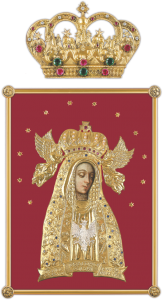The last renovation of the church of St. Dorothy began on October 20, 2007. The neo-Gothic shape of the church has been preserved, but the interior refers to the Baroque style. All interior elements, except the choir and organ, have been renovated. Standing in front of the main entrance of the temple, you can see the imposing entrance door. They are entirely made of wood and have a beautiful dark brown shade. Behind the door there is a porch with statues of Our Lady Immaculate and Saint Anthony. The new floor is made of marble. There is a heating installation under the floor. The benches were painted brown. The Stations of the Cross have undergone a thorough renovation. They have a new golden-colored frame. The stained glass windows above in the window openings are also new. They present the history of the Miraculous Image of Our Lady of Lichen. Walking towards the altar, you can see the side chapels. On the right is an image representing st. Father Stanisław Papczyński. His relics are also placed there. On the left, on the other hand, there is a copy of the Miraculous Image of Our Lady of Lichen with votive offerings and tablets with thanks for the favors received.
29 września 1852 r. z udziałem 80 tysięcy pielgrzymów cudowny obraz został przeniesiony uroczyście do prowizorycznego kościoła w Licheniu. Sześć lat później gotowy był już nowy – murowany. Ale Maryja miała inne plany...
The main altar is visible in the middle. It was moved about 1.5 m deep. The passage behind the altar has been preserved. The painting, which is currently placed in the main altar, shows St. Dorothy, the patron of the church. It was moved from the side altar. It was painted probably in 1920. During the renovation of the temple, it was renovated.
The altar table consists of two figures of angels. Their wings are the main part of the altar, the so-called mensa. The pulpit is on the left side of the altar. Its appearance symbolizes the breath of the Holy Spirit. The white marble from which the altar table and the pulpit are made was brought from Carrara (Italy). From the same quarry 500 years ago, Michelangelo took the marble from which he made the famous Pieta.
Account numbers banking
Account number PL
59 1320 1449 2769 6770 2000 0004
Numer konta Wesprzyj
05 1240 1415 1111 0011 4321 6635
FOR DONORS FROM ABROAD
MORE INFORMATION HERE






